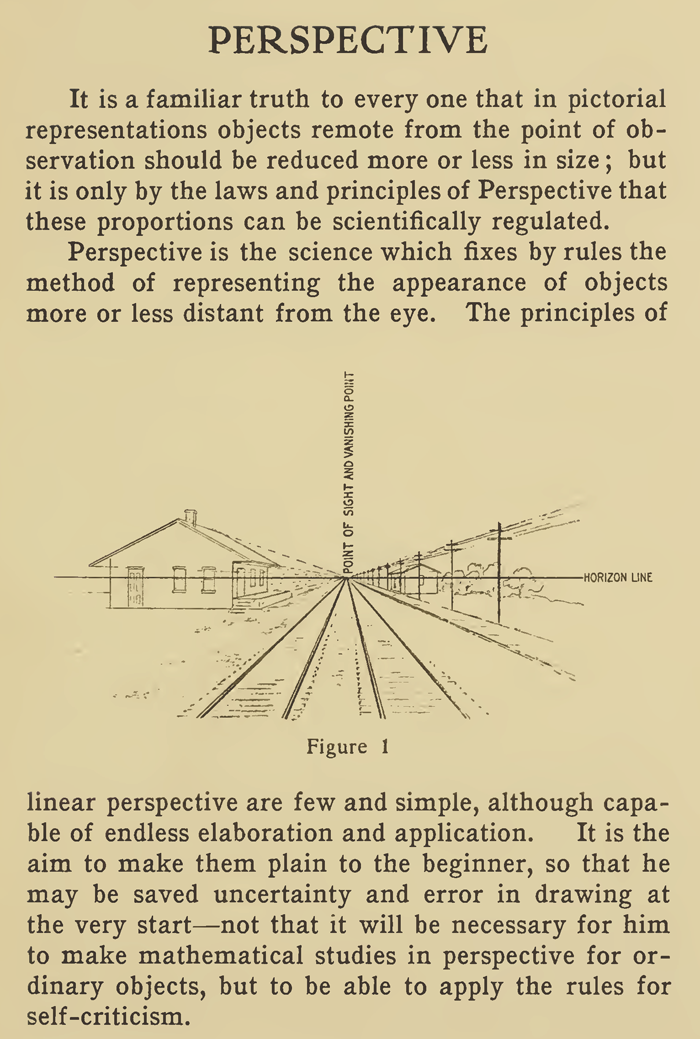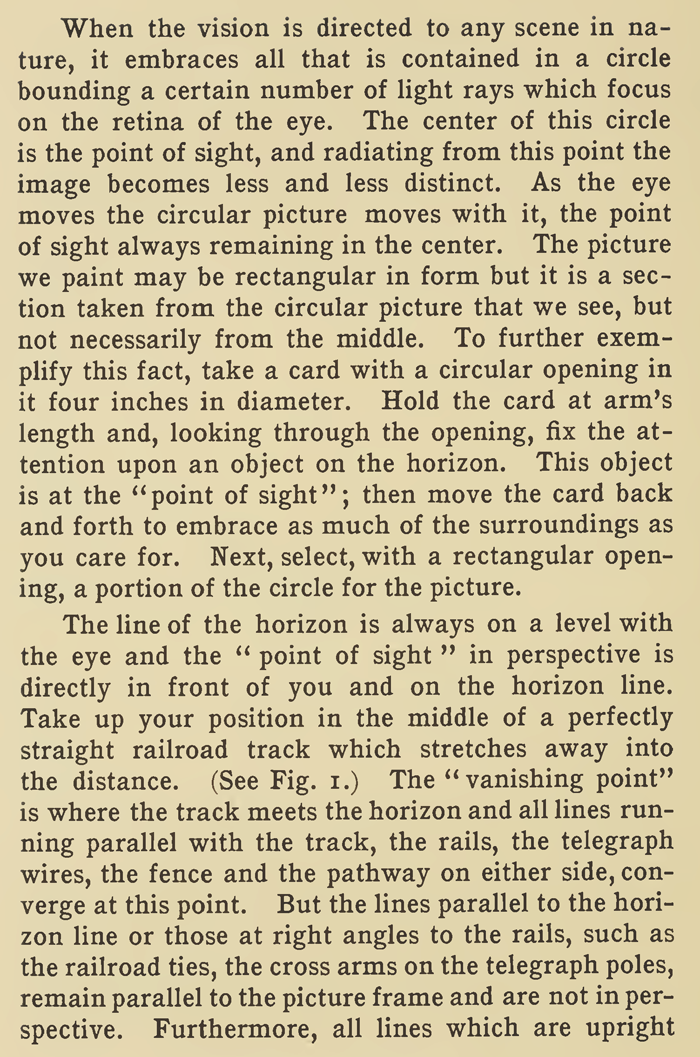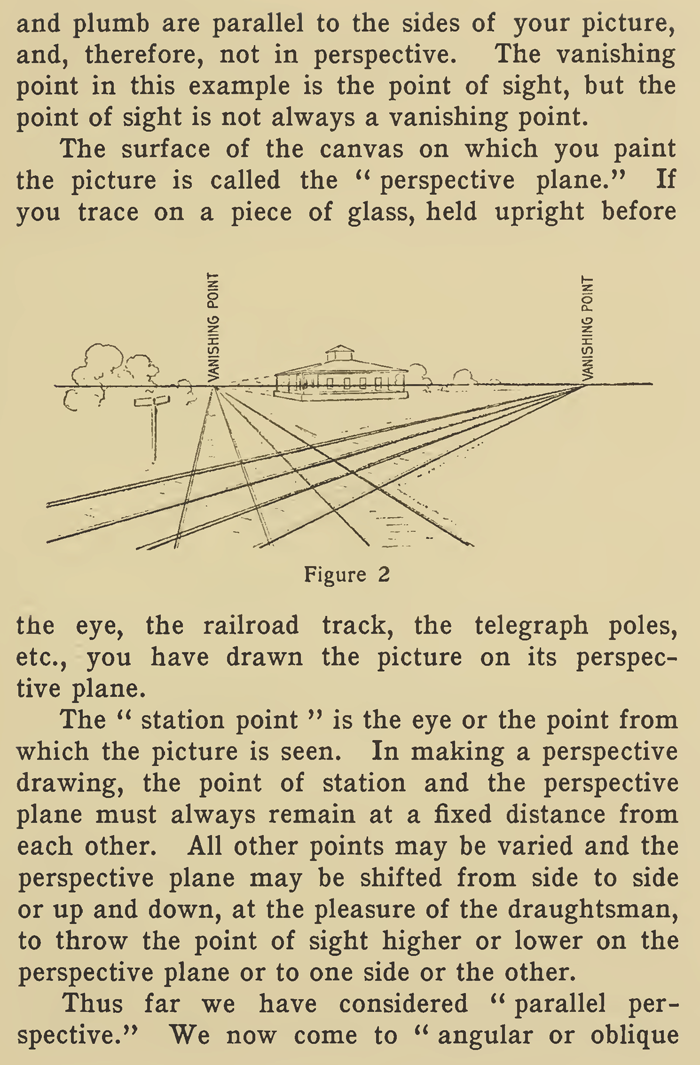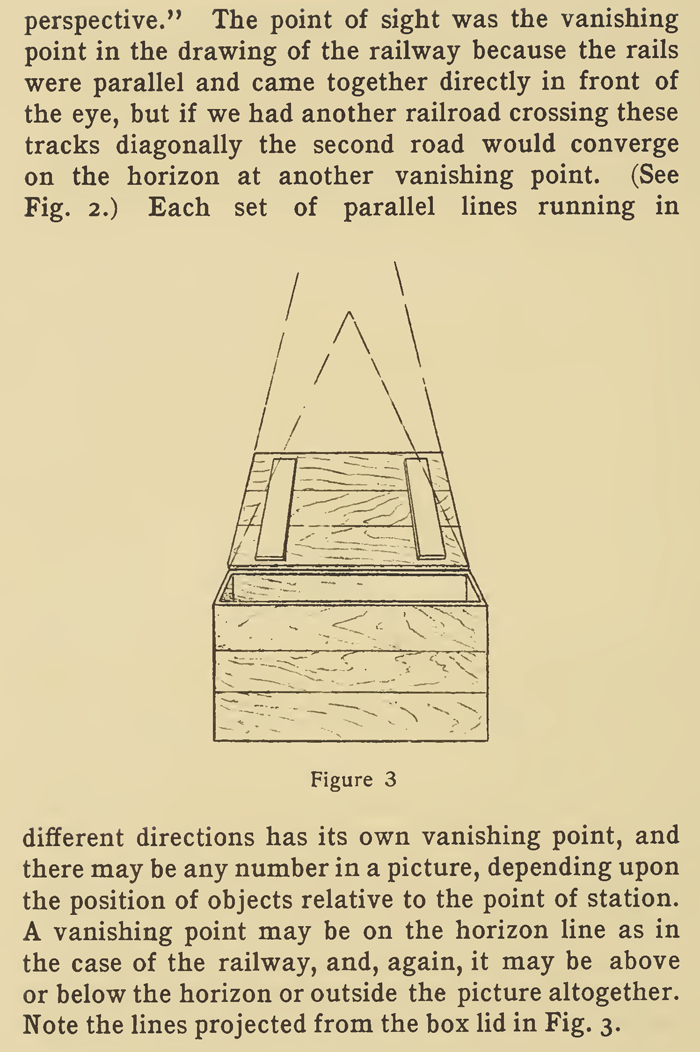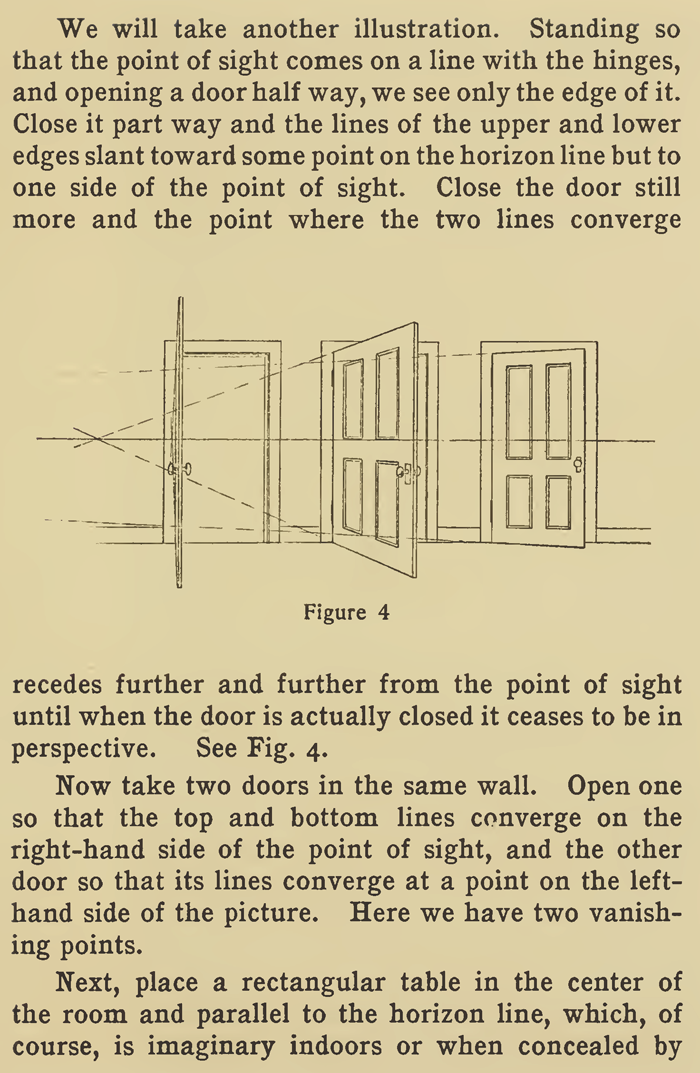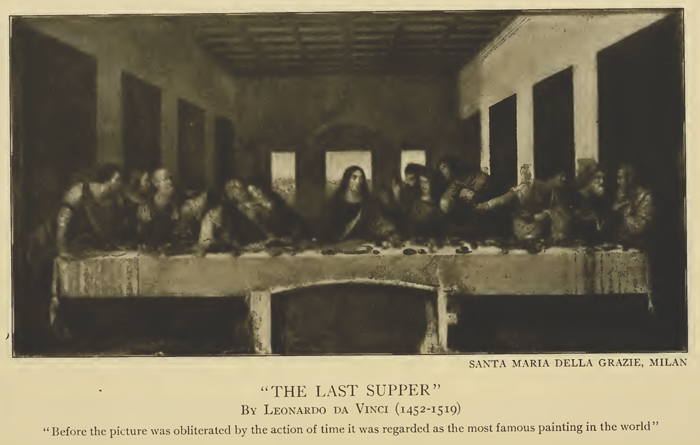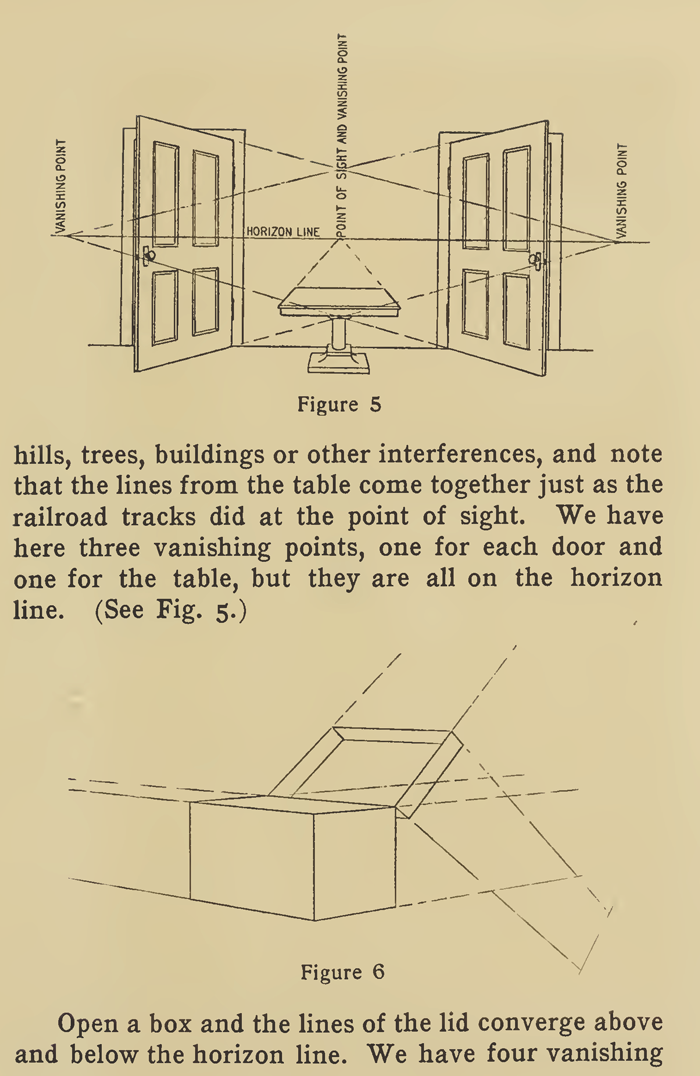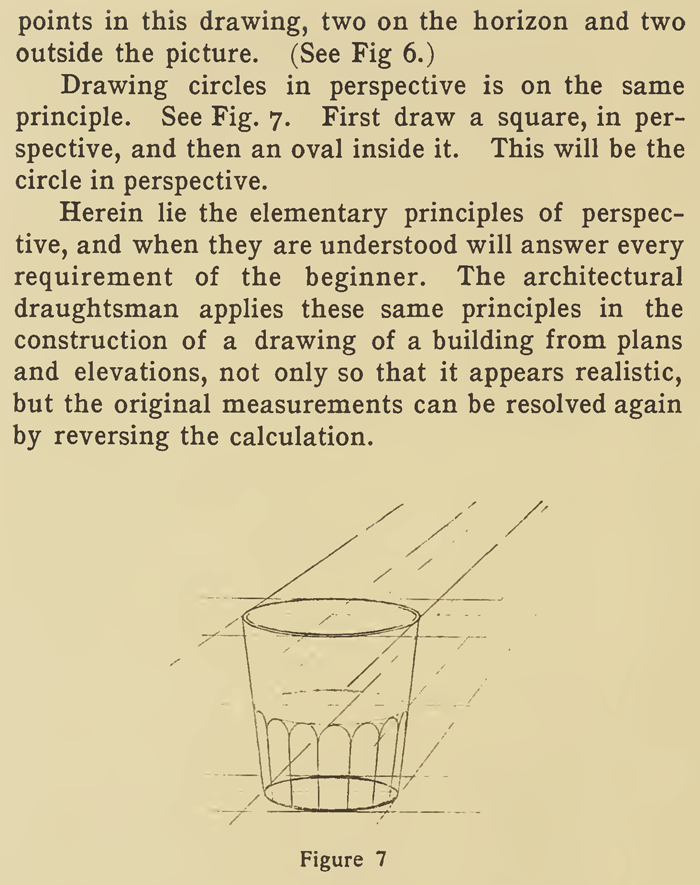Home > Directory of Drawing Lessons >Perspective Drawing > Perspective Drawing Tutorials
PERSPECTIVE DRAWING TUTORIAL : 1 & 2 Point Perspective Lesson
|
|
DRAWING LESSON IN PERSPECTIVEIt is a familiar truth to every one that in pictorial representations objects remote from the point of observation should be reduced more or less in size ; but it is only by the laws and principles of Perspective that these proportions can be scientifically regulated. Perspective is the science which fixes by rules the method of representing the appearance of objects more or less distant from the eye. The principles of linear perspective are few and simple, although capable of endless elaboration and application. It is the aim to make them plain to the beginner, so that he may be saved uncertainty and error in drawing at the very start—not that it will be necessary for him to make mathematical studies in perspective for ordinary objects, but to be able to apply the rules for self-criticism. When the vision is directed to any scene in nature, it embraces all that is contained in a circle bounding a certain number of light rays which focus on the retina of the eye. The center of this circle is the point of sight, and radiating from this point the image becomes less and less distinct. As the eye moves the circular picture moves with it, the point of sight always remaining in the center. The picture we paint may be rectangular in form but it is a section taken from the circular picture that we see, but not necessarily from the middle. To further exemplify this fact, take a card with a circular opening in it four inches in diameter. Hold the card at arm's length and, looking through the opening, fix the attention upon an object on the horizon. This object is at the "point of sight" ; then move the card back and forth to embrace as much of the surroundings as you care for. Next, select, with a rectangular opening, a portion of the circle for the picture. The line of the horizon is always on a level with the eye and the " point of sight " in perspective is directly in front of you and on the horizon line. Take up your position in the middle of a perfectly straight railroad track which stretches away into the distance. (See Fig. I.) The " vanishing point" is where the track meets the horizon and all lines running parallel with the track, the rails, the telegraph wires, the fence and the pathway on either side, converge at this point. But the lines parallel to the horizon line or those at right angles to the rails, such as the railroad ties, the cross arms on the telegraph poles, remain parallel to the picture frame and are not in perspective. Furthermore, all lines which are upright and plumb are parallel to the sides of your picture, and, therefore, not in perspective. The vanishing point in this example is the point of sight, but the point of sight is not always a vanishing point. The surface of the canvas on which you paint the picture is called the " perspective plane." If you trace on a piece of glass, held upright before the eye, the railroad track, the telegraph poles, etc., you have drawn the picture on its perspective plane. The " station point " is the eye or the point from which the picture is seen. In making a perspective drawing, the point of station and the perspective plane must always remain at a fixed distance from each other. All other points may be varied and the perspective plane may be shifted from side to side or up and down, at the pleasure of the draftsman, to throw the point of sight higher or lower on the perspective plane or to one side or the other. Thus far we have considered " parallel perspective." We now come to " angular or oblique perspective." The point of sight was the vanishing point in the drawing of the railway because the rails were parallel and came together directly in front of the eye, but if we had another railroad crossing these tracks diagonally the second road would converge on the horizon at another vanishing point. (See Fig. 2.) Each set of parallel lines running in different directions has its own vanishing point, and there may be any number in a picture, depending upon the position of objects relative to the point of station. A vanishing point may be on the horizon line as in the case of the railway, and, again, it may be above or below the horizon or outside the picture altogether. Note the lines projected from the box lid in Fig. 3. We will take another illustration. Standing so that the point of sight comes on a line with the hinges, and opening a door half way, we see only the edge of it. Close it part way and the lines of the upper and lower edges slant toward some point on the horizon line but to one side of the point of sight. Close the door still more and the point where the two lines converge recedes further and further from the point of sight until when the door is actually closed it ceases to be in perspective. See Fig. 4. Now take two doors in the same wall. Open one so that the top and bottom lines converge on the right-hand side of the point of sight, and the other door so that its lines converge at a point on the left-hand side of the picture. Here we have two vanishing points. Next, place a rectangular table in the center of the room and parallel to the horizon line, which, of course, is imaginary indoors or when concealed by hills, trees, buildings or other interferences, and note that the lines from the table come together just as the railroad tracks did at the point of sight. We have here three vanishing points, one for each door and one for the table, but they are all on the horizon line. (See Fig. 5.) Open a box and the lines of the lid converge above and below the horizon line. We have four vanishing
points in this drawing, two on the horizon and two outside the picture. (See Fig 6.) Herein lie the elementary principles of perspective, and when they are understood will answer every requirement of the beginner. The architectural draftsman applies these same principles in the construction of a drawing of a building from plans and elevations, not only so that it appears realistic, but the original measurements can be resolved again by reversing the calculation. |
Privacy Policy ...... Contact Us





